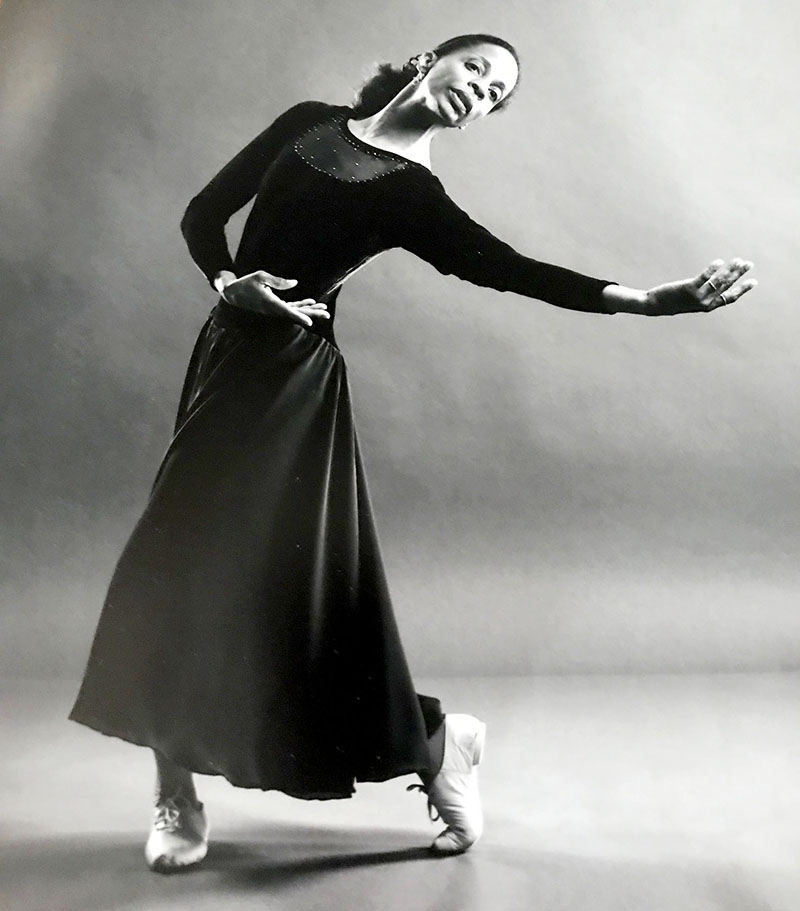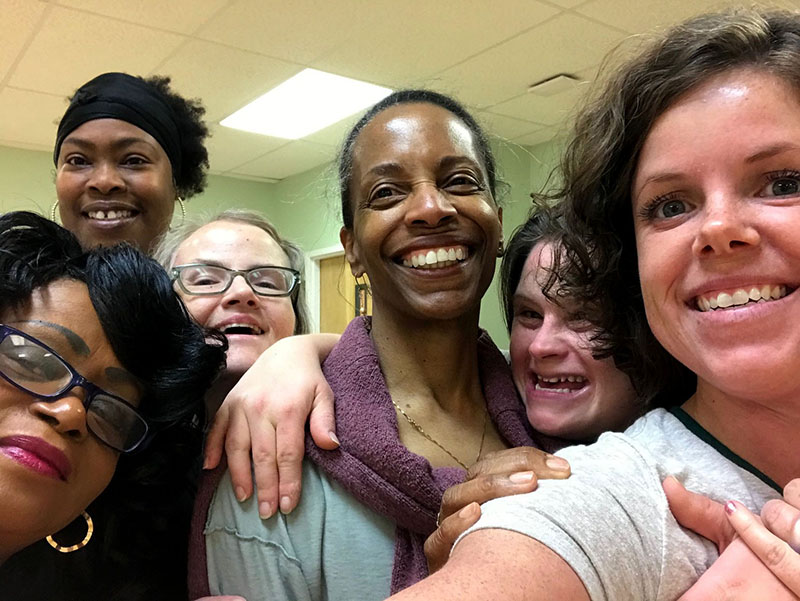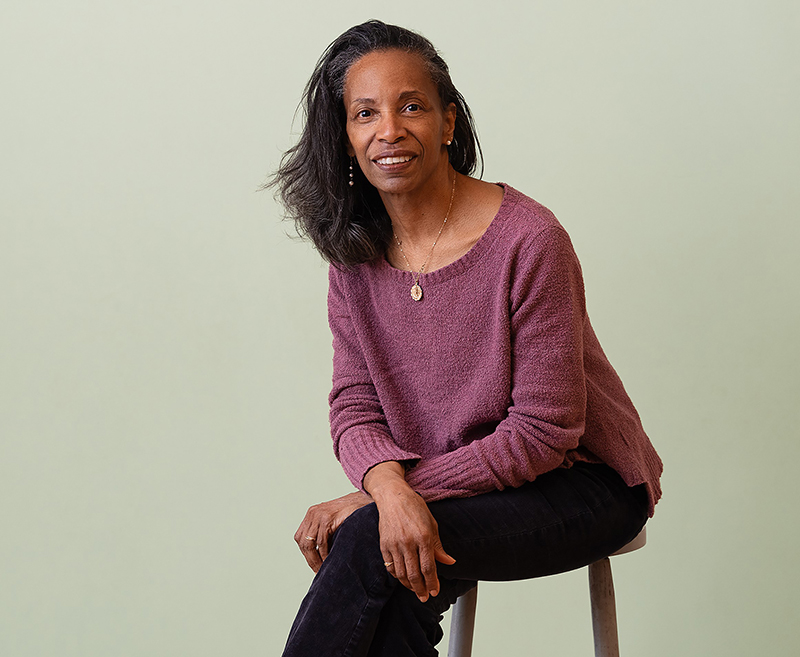Crossing the Threshold as a Dancer and Teacher
BY DIANA TURNER-FORTE
Note: This essay was first published in Stance on Dance’s spring/summer 2023 print issue. To learn more, visit stanceondance.com/print-publication.
Long before I knew where I was headed in life, the dance studio held a fascination: classical music, sometimes with a live pianist, unobstructed wall-to-wall space, solid hardwood floors with just the right amount of spring and resistance, occasional forays into the imagination as fairies, snowflakes, and floating leaves given the season. And the ultimate — total physical and mental concentration. I couldn’t get enough.
What was irresistible to my creative spirit were the kinesthetic discoveries which challenged my developing frame and provided the opportunities to practice and study near physical perfection in lines, shapes, and musical synchronicity. Even so, no one was more surprised than I when, after two years of college and observing a live performance of the Royal Winnipeg Ballet’s Fall River Legend, I determined that dance would be my profession. With the blessings and monetary assistance of my parents, I moved to Winnipeg, Canada to obtain my professional dance training at the Royal Winnipeg Ballet School.
A professional dance career followed with companies in the United States: Chicago Ballet, San Diego Ballet, Des Moines Ballet, and BalletMet Columbus. These proved to be extraordinary achievements beyond my wildest dreams. Besides the elation of dancing on stages to zealous applause and appreciative audiences, dance education presentations in public schools in close-up, face-to-face interaction with young children was where I caught glimpses of the power of dance to move souls, elevate emotions, and potentially change lives.

Photo by Tim Sayer
My teaching career came about abruptly after an injury (stress fractures on both shins) sidelined me for a year. In the process of healing and transcending the injury (which at the time was considered medically miraculous), overcoming the pain in my legs, an addiction to ibuprofen, and other emotional factors stilted my desire to return to the concert stage. Whether out of fear or a need for a different focus in life, I explored other avenues.
A short stint in arts administration at the regional and state levels, as well as exploring dance therapy and other somatic methodologies (Alexander Technique and Bartenieff Fundamentals), only made me more aware that my voice and most authentic self-expression emerged from exploring movement in the open space of a dance studio. The yearning to discover the deeper meaning of dance personally, emotionally, and spiritually necessarily required crossing the studio threshold and proved to be both healing and energizing.
The first ballet class I taught consisted of adults who had studied dance previously during childhood, intermittently into adulthood, or professionally for a brief period. They were used to the rigors of a ballet class and didn’t mind my well-crafted lessons overloaded with structure and attention to detail. Essentially, I taught the way I was taught in a strict, disciplined manner. An array of teacher training courses facilitated my growth as an instructor, but not what was of immediate and urgent interest to me: the human form — how muscles functioned, how dancers recovered from the trauma of injuries, how they sustained creativity, and how they maintained emotional and spiritual balance.
The latter became my driving force for teaching dance — there was something beyond the mechanics of the classical ballet training that allowed spirit to come alive in the human form even in the midst of injury and muscular pain. This was something I knew and had observed through the performances of great dancers like Mikhail Baryshnikov, Alicia Alonso, Margot Fonteyn, and others. And from my own occasional ecstatic moments when I reached the pinnacle of perfection while performing. An underlying current sustained the movement, inexpressible through words, but felt by both dancers and audiences. This current fueled the regal carriage, the grace of the human body, and mobilized artists to push beyond physical boundaries. I found this to be both instructive and awe-inspiring. It sustained my interest in dance.
While teaching didn’t initially seem to provide the highs that performing offered, I would discover it was possible to obtain a different kind of gratification from interacting with students. As a teaching artist visiting lower income city schools, I immediately recognized how the educational environment hampered creative exploration. While I could draw out a student through a dance experience for a few weeks, they always had to return to the confines of the classroom. A short residency only stimulated the creative spirit; how could it be held with more reverence? I would receive the answer from an unlikely group of students.
Well into my teaching career armed with certificates in teacher training, body-mind integration, and the healing arts, I was offered the opportunity to teach dance to a community of disabled adults. The participants were labeled as having intellectual and developmental disabilities. From the beginning, I had to concede that I felt disabled in their presence. If I had hoped to receive a manual, “How to Teach Dance to Adults with Multiple Challenges Across a Spectrum of Skills and Ages at the Same Time,” I would have been delusional. Nothing prepared me for what I would encounter. In fact, much of what I had been taught about teaching dance, especially the class structure and lesson plans, was of little use in this environment.
My first class with my group of special needs adults could be classified as disastrous. Throughout the lesson, students wandered in and out as if the studio had a revolving door. Some participants arrived late (schedule conflicts). Others arrived in wheelchairs or with walkers. Still others left early — literally just walking out without saying anything or even acknowledging my presence. By the end of my first session with my perfectly designed lesson plan I had two students, a bruised ego, lots of questions, and a feeling of total ineptness, which became the salt for new learning, curiosity, and research.
To recover a sense of enthusiasm for my new venture, I had to be creative — I was drafting the manual — and spontaneity became the norm. The benchmarks for learning were joy, laughter, freedom, and play; the students’, not mine. Intangible as those traits were, they became the foundation of my classes and were meaningful to the adults I was serving. They could care less about my qualifications; what was important was that I cared. For many, in their younger experiences in a dance studio if they had any at all, they were told: “Stand over there”, “Be careful”, or “You can’t dance”. Wholeheartedly engaged in shifting that ingrained mindset was like turning around a barge single-handedly.
In our weekly ritual, I would turn on the music, open the door slightly, and assume a statue-like pose — a ploy to attract the students. They would peer through the partially opened door and wander in, try on various shapes as I changed positions, lean against a wall, or meander around the room watching, listening, and sometimes responding with their own percussive interpretations of the music. One day peering through my peripheral vision, I observed a fellow in a wheelchair doing an improvisation of syncopated gestures with his upper body, occasionally adding a head movement that generated a smile. It was a rhythm that was unique and so expressive from what I was offering and at the same time established an interpretation that was original and authentic for him. The whole class participated briefly in his joyful momentary demonstration. These experimental moments flowed into a collaboration of movement ideas, trust, and new relationships.

In my explorations with this population, I reflected on how many times differences are not appreciated, much less elevated, in society. In fact, my adult learners had the same aspirations as any of my younger students. They loved to dance. They valued movement and rhythm and the complementary alignment of music to body, mind, and spirit. They may not have expressed it as such, but they were seeking something I appreciated as a young dancer stepping across the threshold of the dance space: a magical world. When asked by a casual observer how I managed to teach in the chaos, I realized that I saw something different: shared play. In this studio setting, their play was spirit-filled and aligned with their own wills to learn, explore, and discover new things about themselves. I was held captive by my students’ range of creativity.
I did not come to these insights immediately. It was an arduous process of relearning and changing my personal teaching practices to accommodate a special community I felt honored to serve. The practices evolved into a pedagogy which was suitable and complementary to the population by placing them first, which was much different than their place in society. My experiential understanding led me to step into an improvisational, in-the-moment approach to teaching. This required an attitude of allowing, being present, and imagining all of us learning and growing together. For these adults, the studio became an enlivening and energetically infused environment that required noticing everything in general, as well as recognizing and honoring particular moments of creativity as they arose.
What began as a tense and super-charged task of perfection and rigid principles developed into an atmosphere of ease and freedom. The essence of the class came about through a release of structure, established forms, and content. Through this process, the body itself is informed by spirit and soul responding to sounds and inner rhythms which ignore limitations.
My newly claimed teaching practices with this particular group of adults was life enriching. The invitation to the students was simple: cross the threshold, connect to yourself, embody and ignite your inner fire. The extended value was in observing their confidence soar as they carried themselves differently, especially when moving outside the studio into the other activities the facility offered. After dance, the students conducted themselves with dignity and pride in a way heretofore had not been considered or expected.
Perhaps, as a dance instructor, what I was seeking then and now is a shift in consciousness captured in movement and expressed as an outer glow of joy from the bodies and faces of my students. And the beauty of this gift is something as modest as holding sacred space for them to explore their creativity within their boundaries and discover wholeness. How magical is that?!

Photo by Lisa Makana
~~
Diana Turner-Forte is a teaching artist, healing arts coach, and writer. Her work is dedicated to the people of which this essay is written. Additionally, she conducts Embodied Spirituality workshops for the greater community. Her other interests include knitting, science fiction, and writing poetry. Diana resides in North Carolina with her husband, Kenn, a gifted wood artisan, and four-legged creature, Pierre.
